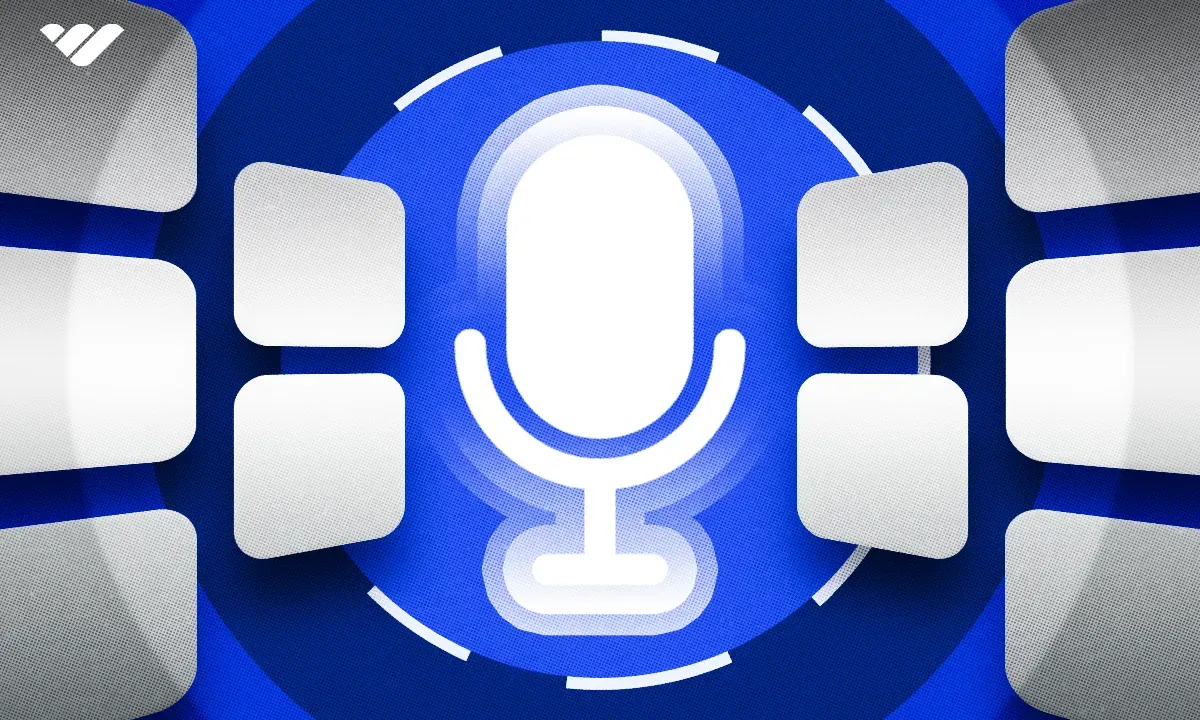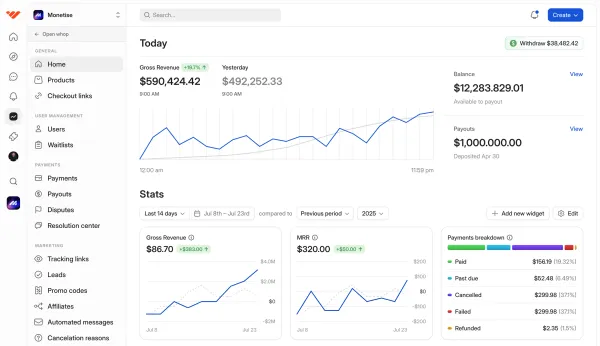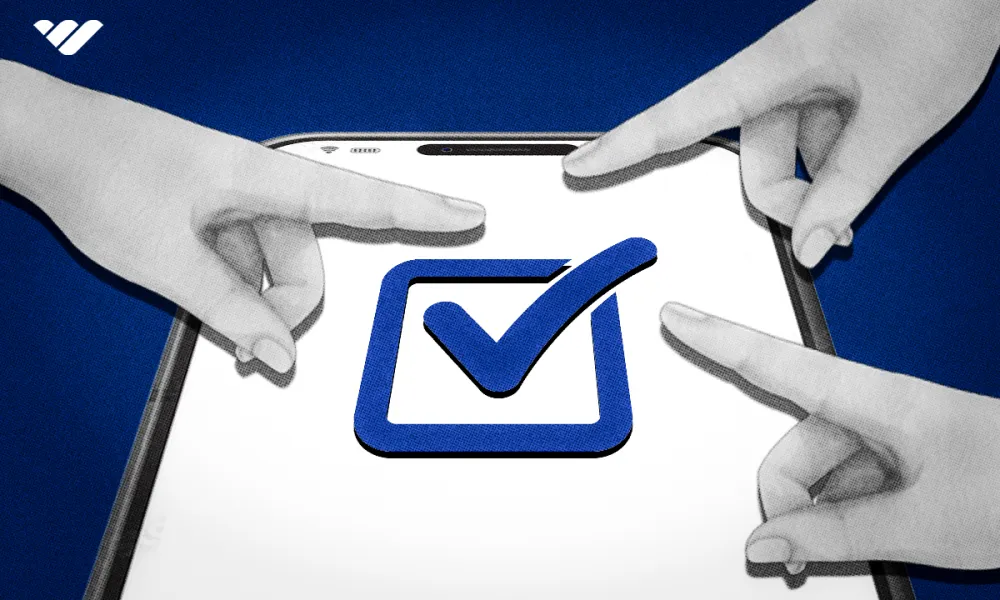Discover creative ways to make extra income while working full-time with tips and ideas tailored for busy professionals.
Key takeaways
- Set specific financial goals like earning $500-$1,500 monthly rather than vague targets.
- Map out weekly schedule pockets and claim 1-2 hour blocks as dedicated side hustle time.
- Test your side hustle with a minimum viable product before making large commitments.
- Freelance writing can earn $0.10-$1.00 per word, potentially generating $500-$2,000 monthly.
- Virtual assistants typically earn $15-$30 hourly working 10-15 hours weekly.
Who doesn’t want a little extra cash without giving up the security of a full-time gig?
With living costs climbing and financial goals always feeling just a bit out of reach, earning extra income has moved from “nice-to-have” to a real need for many. Maybe it’s the dream vacation you’re planning, the down payment for your first home, or simply the desire to save more—whatever your reason, there’s real value in finding ways to earn more without ditching your day job.
But where do you start? The trick is picking a side hustle that actually pays off without draining you dry.
In this guide, we’ll cover practical steps to help you make the most of your time and set up sustainable income streams.
After that, you’ll get a lineup of side hustle ideas that fit around your lifestyle and schedule, letting you start earning extra while keeping your main gig.
Let’s get started.
5 steps to make extra income while keeping your day job

Starting a side hustle while juggling a full-time job takes some thought—and maybe a little coffee. But it’s absolutely doable with the right approach.
Here's some advice to get you started:
Step 1: Define your goals and prioritize your time
It all starts with a clear financial target. Forget vague goals like "make extra money" and instead set a specific amount. Maybe an extra $500 a month would ease a utility bill, or $1,500 could go toward a dream vacation.
This way, you’ll know exactly what you’re working toward and can measure your progress as you go.
Next, let’s talk about time commitment. To make a side hustle fit around your full-time job, you need to know your schedule inside out. Look at your weekly schedule and find those open time pockets you can commit to your side gig. Maybe it’s 1 or 2 hours each evening or a solid block of time over the weekend. Map it out and claim it as side hustle time—no exceptions.
Knowing exactly when you'll work on your side hustle keeps you consistent, which in turn can help you build momentum.
Lastly, work with your energy levels, not against them.
Some side hustles require more focus, like freelance consulting or tutoring, while others—such as completing surveys or basic data entry—are less demanding.
Plan to tackle tasks that require higher mental energy during your peak productivity hours, typically earlier in the day or immediately following a break. This strategic approach allows you to maintain the quality of your full-time job while making the most of your side job hours.
Step 2: Identify skills and interests you can monetize
Next, figure out what skills you bring to the table.
Start with a skills audit—not just your day job skills, but the hidden talents that others might find valuable. Maybe your storytelling flair could translate into freelance writing, or your knack for organization could set you up as a virtual assistant. Think big!
And don’t discount hobbies either; sometimes the personal interests you enjoy most can be the foundation of a lucrative side gig if there's a market for them.
Wondering how to gauge market demand?
Check out platforms like Upwork or TaskRabbit. These sites are goldmines for spotting services people actually pay for. Data entry, virtual assistance, graphic design, social media management…they’re always in demand, hinting at where your skills could fit. Additionally, you may spot niche services that align with your abilities but that you hadn’t previously considered monetizing.
For some skills, a little extra training or certification could boost your credibility, especially in fields like coding or digital marketing. Platforms like Whop or Coursera offer affordable courses, making it easy to add new expertise without a major time or money investment.
The payoff? Better marketability and higher rates.
Step 3: Evaluate time vs income potential
Now that you've zeroed in on a profitable niche that plays to your strengths, it's time to weigh how much each side hustle could earn you for the hours you put in.
First, estimate the potential hourly earnings for each option. If you're considering freelance copywriting, for example, you might pull in anywhere from $30 to $50 an hour, depending on your experience and the type of projects you take on.
In contrast, ventures like selling handmade goods on Etsy might demand more setup time and yield unpredictable income, especially early on as you build a customer base and refine your products.
Examine each option’s earning potential to get a clear picture of the time commitment needed to hit your income goals from Step 1. Then, think about whether any side hustle offers a “passive” income angle.
While passive income isn’t entirely hands-free, it lets you keep earning without constantly swapping time for money after the initial setup. Selling digital products or creating Notion templates can bring in ongoing revenue with minimal upkeep once they’re up and running. This approach can be particularly appealing if you want to maximize earnings without locking yourself into an hourly commitment.
Keep in mind that even passive income streams need upfront effort, especially in the creation and promotion phases.
To help you prioritize, picture these options on a time-investment scale. On one end, you have low-effort gigs, like surveys or doing quick tasks that align with your existing skills, which may provide faster returns and work well for short-term financial needs. On the other end, high-effort projects like launching an online course or a full-scale blog might take more time to get going but could pay off significantly over the long haul.
Plotting each side hustle on this scale will help you match them to your immediate and future income needs.
- How much can you make selling digital products?
- How much does it cost to start a business?
- How much can you make with online surveys?
Step 4: Start small and test your hustle
When kicking off a side hustle, think small and test things out before diving in deep.
Begin with a minimum viable product (MVP)—a simple, scaled-down version of your idea that highlights its main value. This way, you’re putting something out there with minimal risk. For example, if you’re looking to freelance, take on a small project, or offer a limited version of your service at a discount. This lets you get hands-on experience without getting swamped by large demands.
Testing across different platforms can also give you a better shot at success. Instead of sticking to one place, try listing your services on multiple platforms like Fiverr, Upwork, or even niche job boards. This broad approach lets you see where demand is highest and helps you find the best fit for your audience and style.
Finally, listen closely to feedback from your early clients or customers. Their insights are golden for refining what you offer, fixing any issues, and polishing your service based on real-world input. Plus, positive feedback can build your credibility and attract new clients.
Treat this stage as a learning period—use each piece of feedback to improve and set yourself up for growth.
Step 5: Set boundaries and create a schedule
This is super important: Your boundaries and a clear schedule are non-negotiable.
So, define specific “office hours” for your side gig. This way, both you and any clients know when it’s side-hustle time, and when it’s not. Stick to these dedicated slots to protect your personal time and stay focused while keeping your full-time job performance intact.
I'll also recommend using project management tools like Trello or Asana to keep all your tasks in one place. These platforms make it easy to track deadlines and prioritize, helping you break bigger projects into smaller, manageable steps. Be realistic about the deadlines too. It’s tempting to dive in full throttle, but you have to pace yourself to maintain both jobs without burning out.
And, don't forget those monthly check-ins to make sure your side hustle stays sustainable.
Carefully analyze your workload, income, and energy levels.
Is this hustle still worth it, or is it starting to wear on other parts of your life?
If it’s working out, great! If not, you can adjust, scale up, or even explore other ventures that might align better with your time and financial goals. This is crucial to ensure you’re building a side hustle that works with your existing full-time life, not against it.
21 side hustle ideas to make extra money
Wondering which side hustles would make the most sense for you?
Here are 21 side hustle ideas, each with a breakdown of what it involves, how to get started, the estimated time commitment, and potential earnings:
1. Freelance writing and editing

Got a way with words? Freelance writing and editing could be right up your alley, with flexible gigs available across industries.
To make money writing, start by building a portfolio with some sample pieces—sites like Contently or a simple blog work well. Sign up on freelance platforms like Upwork or Fiverr to connect with clients. The time commitment varies by project, but if you can set aside 5–10 hours a week, it can translate to meaningful income.
Earnings usually range from $0.10 to $1.00 per word, potentially adding up to $500–$2,000 monthly—sometimes even greater, depending on your experience and the work's complexity.
Another way to make money with writing is to teach others how to write. Create an online community with your own whop and train up aspiring writers. You can sell online writing courses, your cold pitch templates, consulting services, and more.
- How to make money writing: Expert tips, tools, pay guide & more
- How to start a profitable freelance business from scratch
2. Virtual assistance
Virtual assistants (VAs) help businesses and entrepreneurs stay organized by handling administrative tasks like managing emails and scheduling appointments.
Identify the services you’re best suited for, then set up a profile on sites like Belay or Time Etc to find clients.
A commitment of around 10–15 hours per week is typical, with hourly rates between $15 and $30. This means you could see an extra $600–$1,800 earnings per month.
3. Graphic design services
Got an eye for aesthetics and some Adobe skills to back it up? Why not turn that into cash by designing logos, social media graphics, or eye-catching marketing materials? Start by building a digital portfolio on platforms like Whop or Behance to show off your style.
It’s a flexible job that fits into 5–15 hours a week, depending on how busy you want to be. With projects paying anywhere from $50 to $500+, you could be looking at an extra $500 to $3,000 in your account each month. Your creativity is your limit here.
4. Online tutoring/training

Tutoring has gone beyond helping kids with math or science homework—it’s now a way to teach almost anything you’re passionate about. If you’re skilled in academic subjects, sure, platforms like Tutor.com or VIPKid can connect you with eager students worldwide.
But why stop there? Maybe your expertise lies outside the classroom. Imagine coaching aspiring entrepreneurs in business strategy, or guiding beginners through yoga poses in their living rooms.
With Whop you can create communities or courses around any subject. If trading is your passion then teach others how to become successful traders. Or, if sewing is your thing, create a course on 'Sewing 101' and teach your students the basics.
The amount you make depends on the path you choose. If you work as a tutor for a platform like VIPKid then you earn an hourly wage of around $14, so with 10 hours a week you can earn $140, adding $588 to your monthly income.
Meanwhile, if you create your own tutoring course or community on Whop, your earnings are limitless as you set your own rates.
- How to become an online tutor in 5 simple steps
- How to sell training courses online: From choosing a niche to creating a marketing funnel
5. Ecommerce and dropshipping
Want to run a store without worrying about boxes piling up in your living room? Dropshipping lets you sell products without holding inventory—your supplier ships directly to customers.
Start by finding a niche with high demand and low competition (something like eco-friendly gadgets or quirky pet toys) and setting up shop on Shopify or WooCommerce.
Yes, the setup can feel like a sprint, but once you’re up and running, expect to spend just 5–10 hours a week managing orders and marketing. Your wallet will thank you—some side hustlers pocket $500 to $5,000 a month with the right strategy.
To really win at ecommerce (including dropshipping) then check out ecommerce courses and communities on Whop. Rather than going it alone, learn tips and tricks from those who are already successful in this field.
6. Pet sitting and dog walking
To build trust, focus on obtaining any necessary certifications like pet first aid, then advertise your services on local community boards, social media, or platforms like Rover.
This gig is flexible, too—you can commit 5–10 hours weekly, depending on your schedule. With pay hovering around $7.50–$22 an hour, this could add an easy $300 to $1,200 a month.
Plus, cute furry friends.
Enough said.
7. Content creation on YouTube
If you’ve got a camera and a niche you're passionate about (and capable of producing consistent content for!), YouTube could be your ticket to extra cash.
Whether it’s reviewing tech or cooking vegan recipes, there’s an audience for almost everything. Start with a decent mic, editing software, and a content plan that’s realistic for you.
Expect to spend about 10–20 hours weekly in the beginning, but as your channel grows, you can scale back. Earnings can range from a few hundred to thousands monthly through ads, sponsorships, and merch. Patience is key—but so is having fun along the way.
Whop is home to plenty of courses and communities that can teach you how to find success with YouTube. From starting your channel, to growing your following, going viral and making money, Whop's YouTube whops can turn your side hustle into a money-making machine.
- Do YouTube Shorts really make money? Find out how much here
- YouTube channel ideas that can make you money online
- How to become a YouTuber & earn money with online video content
8. Online course creation
Creating and selling online courses is another lucrative side endeavor. Whether it's baking the perfect sourdough or coding apps in Python, platforms like Whop make it easy to share your knowledge. Start by breaking down your topic into bite-sized lessons, recording videos, and adding downloadable goodies like templates or checklists.
Now, the initial setup may require time investment, but once your course is live, it works for you 24/7, generating reliable passive income. Whop makes it super easy to create your online course with its native course builder (just check out the video above). Plus, you can make even more money with Whop by selling access to a private community alongside your course.
Your earnings vary based on course popularity, with potential monthly income ranging from $200 to $2,000 or more - some sellers on Whop make over $250,000 per month!
9. Stock photography
If your camera roll is overflowing with stunning sunsets or candid portraits, why not monetize those pixels? Websites like Shutterstock and Adobe Stock are happy to pay for your creative vision.
Build a diverse portfolio (Hint: Lifestyle and business images are always in demand), then upload the photos to multiple platforms to maximize exposure, and let the downloads roll in.
Expect to dedicate a few hours to snapping and uploading, with potential earnings of $0.25–$0.50 per download. That may sound modest, but popular shots can snowball into monthly payouts of $100 to $1,000. Not bad for doing what you love, right?
10. Becoming a notary public
Think of this as your golden ticket to extra cash, especially if you’re organized and don’t mind a bit of paperwork. Notaries witness signatures on important documents (e.g., real estate deals or legal agreements) and get paid for them.
Each state has its own rules, but typically, you’ll need to take a short course, pass a test, and get a fancy stamp. Once certified, you can earn $10–$50 per job, and mobile notaries (yes, the ones who come to you) rake in even more. Work a couple of evenings or weekends and you could pocket $200–$1,000 a month.
11. Affiliate marketing

Ever raved about a product and convinced a friend to buy it? Congratulations, you’re halfway to starting your affiliate marketing career. The rest involves sharing your recommendations online—through a blog, social media, or YouTube—and earning commissions every time someone clicks your link and buys.
Affiliate networks like Amazon Associates or ShareASale have endless products to promote. Expect to spend 5–10 hours a week creating content and engaging your audience. Done right, this hustle can pay off big, with earnings ranging from $100 to a hundred thousand per month depending on your reach.
Did you know that Whop has an affiliate program? You can earn up to 30% commission as recurring revenue for life when you refer creators and customers to Whop.
To help you get started, why not join an affiliate marketing community or take an affiliate marketing course on Whop?
12. Language translation services
Translation services are always in demand, especially in legal, medical, and technical fields where accuracy matters most. Whether it’s translating contracts or technical manuals, your fluency in multiple languages can earn you some serious cash.
Signing up on platforms like ProZ or TranslatorsCafe is a great way to find clients here. Projects vary, so you could be translating a 10-page document one week and a quick email the next. With 5–15 hours of effort a week, you’re looking at a potential $50,000 income annually, depending on the workload and the languages you know.
13. Social media management
As a social media manager, you'll handle everything from creating posts to engaging with followers—all aimed at keeping brands relevant and trendy. You can start small by managing accounts for local businesses or dive into platforms like Upwork to find clients.
Most of your time goes into scheduling content, brainstorming ideas, and responding to followers—around 5 to 10 hours per client each week. And, with monthly paychecks ranging from $300 to $1,000 per client, you might just post your way to some solid extra income.
- How to become a social media manager: From pricing to growing your brand
- Best social media management apps
14. Handmade crafts and digital products

If you’re skilled in creating handmade items such as jewelry, candles, or artwork, consider selling products online. Platforms like Etsy make it simple to set up shop and start selling worldwide.
Begin with a small inventory and let your talent shine through great product photos. While crafting and managing orders might take 5–15 hours a week, the payoff can be sweet: $200 to $2,000 a month, depending on how much love (and stock) you put into your shop.
But if you really want to make the most of your side hustle, why not create digital products? Using tools like Canva, you can make digital products like calendars, journals, trackers, and more. If you don't want to make the products yourself then just add your branding onto PLR digital products (made-for-you products that you resell at a premium!).
- How to sell Canva templates on Whop, Etsy, and more
- Best digital products to sell (and how to make them)
- How to make money selling digital info products
- What are PLR digital products, and how can you make money with them?
15. User testing for websites and apps
Companies rely on user feedback to refine their websites and applications, and platforms like UserTesting and TryMyUI pay individuals to test and provide insights for exactly that.
To get started, create an account on these platforms and complete a sample test. You should then start receiving assignments. Each test takes about 20–30 minutes, so it’s easy to squeeze into your evenings or lunch breaks. At $3 to $30 a pop, dedicating just 5–7 hours a week could land you an extra $100 to $400 a month.
16. Voiceover work

Do you have a voice people would love to hear on repeat? Whether it’s narrating audiobooks, voicing characters, or recording ads, voiceover gigs are waiting. Start by creating a demo reel to show off your style and range, then list your services on platforms like Voices.com or Fiverr.
This side hustle fits neatly into a 5–15 hour weekly slot, depending on project volume. With individual gigs paying anywhere from $50 to $500 and experienced pros raking in thousands, your voice could literally be your moneymaker.
17. Renting out storage space
If you have an unused basement or garage, you can rent it out for storage through platforms like Neighbor.com. It’s a low-effort, passive income stream. Simply list your space, set your rental terms, and connect with people in need of storage.
After an initial setup of around 2 hours to list and organize the space, there’s virtually no time commitment. Depending on the size and location of your storage area, you can earn between $50 and $300 monthly.
You can also rent out the stuff in your space sitting idle like power tools, cameras, and musical instruments through platforms like Fat Llama. The process and earning potential are similar to the above—just be prepared for some coordination for pick-up and drop-off.
18. Mystery shopping
Ever wondered what it’s like to play secret agent—but in a mall? Mystery shopping is your chance to find out. Companies like MarketForce and BestMark pay you to check out stores, restaurants, and hotels while rating things like customer service and cleanliness.
Just sign up, claim gigs that fit your schedule, and share feedback. Each assignment takes 1–2 hours, pays $15 to $50, and sometimes even reimburses you for meals or shopping.
19. Local tour guide or experience host
Do you know your city’s hidden gems like the back of your hand? Becoming a local tour guide or hosting unique experiences (like food tastings, historical tours, or art walks) through platforms like Airbnb Experiences could be your calling.
Create an itinerary and provide memorable interactions for visitors. Time commitment is entirely up to you. Offering one or two tours a week for a couple of hours each can bring in $200 to $1,000 monthly, depending on the demand and pricing of your experience.
20. Renting out your car

Your car spends all day parked, so why not let it earn for you? With Turo or Getaround, you can rent it out to people who need wheels. All it takes is a quick profile setup, uploading some car pics, and setting your rates.
Once it’s live, you only need to handle the occasional pick-up and drop-off. Earnings vary based on your car's make, model, and rental frequency, with potential monthly income ranging from $200 to $800.
21. Participating in focus groups
Companies often seek consumer opinions on their products and services. If this sounds up your alley, sign up with platforms like Respondent and User Interviews to join focus groups that pay for your thoughts. Whether it’s testing a new product or brainstorming ads, you’ll get paid to speak your mind.
Sessions usually take 1–2 hours and pay between $50 and $200, depending on the study's complexity. Do a few of these a month, and you’ve got a steady side hustle powered by, well, being you.
Start making extra income with Whop
Making extra income while juggling a full-time job is totally doable. All you need is the right side hustle and a little determination. The key is to start small, stay consistent, and pick something that energizes you—not drains you.
One of the smartest ways to level up your side hustle is by turning what you’re already good at into digital products or services. Platforms like Whop make this ridiculously easy. Sell memberships, create online courses, or share exclusive content tailored to your niche.
Are you a fitness guru with killer workout plans? A designer with swoon-worthy templates? Or maybe a consultant with actionable advice? With Whop, you can set up a sleek, professional storefront and connect with your audience in no time.
Head to Whop now and start building your next income stream that keeps earning, even when you're off the clock.
You've got this.






![80 remote side hustles to make money from anywhere [2026]](/blog/content/images/size/w1000/2025/11/tablet-designer-home-opt.webp)







